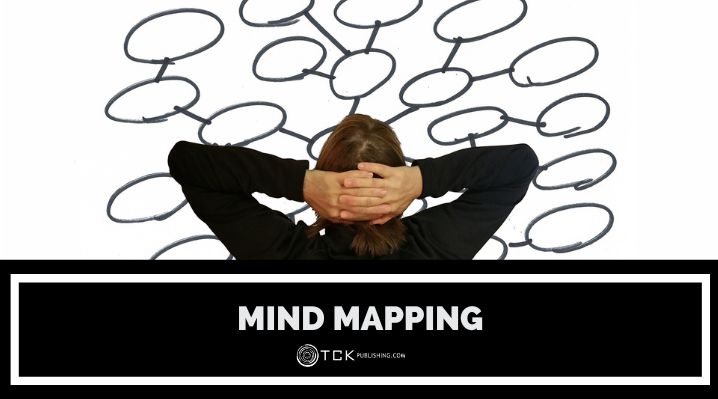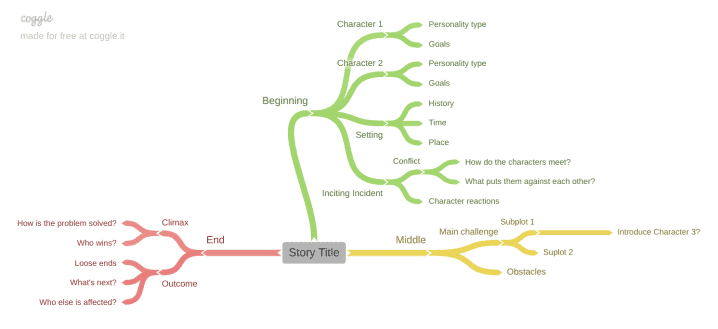
There are many paths to being a writer. A common problem, though, is keeping your thoughts organized. It’s hard to be on track when ideas keep flitting inside your brain.
It’s why a lot of writers also include some way to structure their thoughts when brainstorming. One such method is mind mapping.
What is Mind Mapping?
Mind mapping is a way to organize your ideas visually. Think of it as a web of thoughts where you start with a main idea. From there, you draw branches to related concepts. Each branch can have sub-branches with more specific details.
The goal is to create a hierarchy of your ideas. It’s a simple yet powerful tool you can use to unleash your creativity or make sense of complex ideas. Mind maps allow you to think more freely but also keep you organized.
The Benefits of Mind Mapping
Mind mapping is an all-around tool used in plenty of occupations. But as a writer, this technique can help you in these aspects:
Improves organization.
It’s easy to get lost in a sea of ideas when you’re working on a story. You’ll often forget them as quickly as you think of them.
With mind mapping, you can see all your ideas laid out in one place. This helps you keep track of different elements and see how they connect.
Great for visual people.
Mind mapping turns abstract ideas into clear, visual representations. You can use colors, images, or keywords to make your map appealing and easy to follow.
Assists in planning.
Mind mapping makes the planning process smoother. It’s easier to see the big picture when you lay everything out. For example, you can trace a character to all relevant subplots and key events.
Helps with revision.
A mind map outlines your story in its most basic form. You can use it to review your draft. Seeing the entire story in one place makes it easier to spot gaps, inconsistencies, and other areas for improvement.
Progress tracking.
Think of each branch as a milestone. Reaching each milestone means you’re completing different aspects of your writing.
Use them to track your progress when building your story. This way, you also get to see which parts of the story still need development.
How to Create a Mind Map
There are no set rules to creating a mind map. You can be as broad or specific with yours, depending on what you need or want. For example, you might create smaller mind maps that focus on specific elements of your story. Or you could build one large, comprehensive map that covers everything in a single visual.
All mind maps start with a central idea. This could be the title of your story, a theme you’re exploring, or even a character. From this central point, you branch out with related ideas, building connections as you go.
These branches can lead to more ideas. There is no limit to how many you add or where you stop. Under these branches, add short details to help you remember how everything connects. Add graphics, links, or shapes to further personalize your map.
You can easily create mind maps with pen and paper, or use design software like Figma or Canva. Some tools also specialize in or have dedicated features for making mind maps, such as ClickUp or Coggle.
Here’s what a basic mind map looks like on Coggle:

Mind Mapping as a Writing Tool
Mind mapping is great for all levels of writers and all types of writing. It’s a simple tool that helps you see the bigger picture while keeping track of all the details.
You eliminate writer’s block by laying everything out. You always have a starting point and a way to trace how every element connects to each other. Having uncluttered thoughts makes it easier to write the actual content.
It goes beyond outlining your story, too. You can organize your research notes, brainstorm ideas, and manage resources related to your writing project.
Do you create mind maps when writing? Share your thoughts below!
If you enjoyed this post, then you might also like:
- Eat the Frog: How to Boost Your Productivity
- How to Overcome Too Many Ideas Syndrome
- How Morning Pages Can Improve Your Writing (and Your Life)
- The Pomodoro Technique and How It Can Boost Your Productivity

Cole is a blog writer and aspiring novelist. He has a degree in Communications and is an advocate of media and information literacy and responsible media practices. Aside from his interest in technology, crafts, and food, he’s also your typical science fiction and fantasy junkie, spending most of his free time reading through an ever-growing to-be-read list. It’s either that or procrastinating over actually writing his book. Wish him luck!
